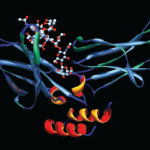The goal was to discover whether molecular signals associated with active lupus and no infection would differ from signals found in patients with both active disease flare and an infection.
Differences in upregulation of genes do suggest a gene expression gradient for disease activity in these acutely ill patients, Dr. Mackay said. Some highlights of the data are that significant upregulation of gene transcripts in interferon and plasma-cell modules differentiate subjects with a disease flare from those with an infection. Compared with stable lupus, acutely ill patients in both the flare and infection groups show an upregulation of genes in both the interferon and inflammation modules studied, she said. In the infection group, there was also an upregulation of neutrophil and myeloid modules.
Examining Joint Arthroplasty Rates
Christina Mertelsmann-Voss, MD, a researcher at the Hospital for Special Surgery in New York, examined increased joint arthroplasty rates among patients with SLE in the United States from 1991 to 2005.
The chronic inflammation associated with SLE can lead to arthritis and joint destruction, increasing the need for joint replacement, Dr. Mertelsmann-Voss said. SLE outcomes are improving due to advances in therapy, but do better treatments lead to less joint destruction and a decreased need for joint replacements, she asked?
She and her colleagues looked at total and partial knee, hip, and shoulder replacement surgeries in SLE patients compared with patients who had no inflammatory or autoimmune disease. Looking at hospital code records, they excluded any people with a dual diagnosis of either rheumatoid arthritis (RA)/SLE or juvenile idiopathic arthritis/SLE that might also be causing joint destruction.
They identified 2,766,913 arthroplasties that included 4,253 surgeries involving lupus patients. In the noninflammatory group, rates almost doubled, while in the lupus group, they more than doubled. Rates of total knee replacements almost tripled, but the rate of total hip replacements decreased, she said.
The incidence of avascular necrosis in SLE patients decreased significantly, while the proportion of those with osteoarthritis significantly increased. In addition, the mean age at the time of arthroplasty for SLE patients rose from 47 to 57 years during the study. This change may be due to more-effective therapy preventing early, rapid joint destruction in SLE patients, she said. In addition, osteoarthritis (OA) as an indication increased dramatically, meaning that lupus patients, treated more effectively early on, are living longer and developing OA that requires surgery.


